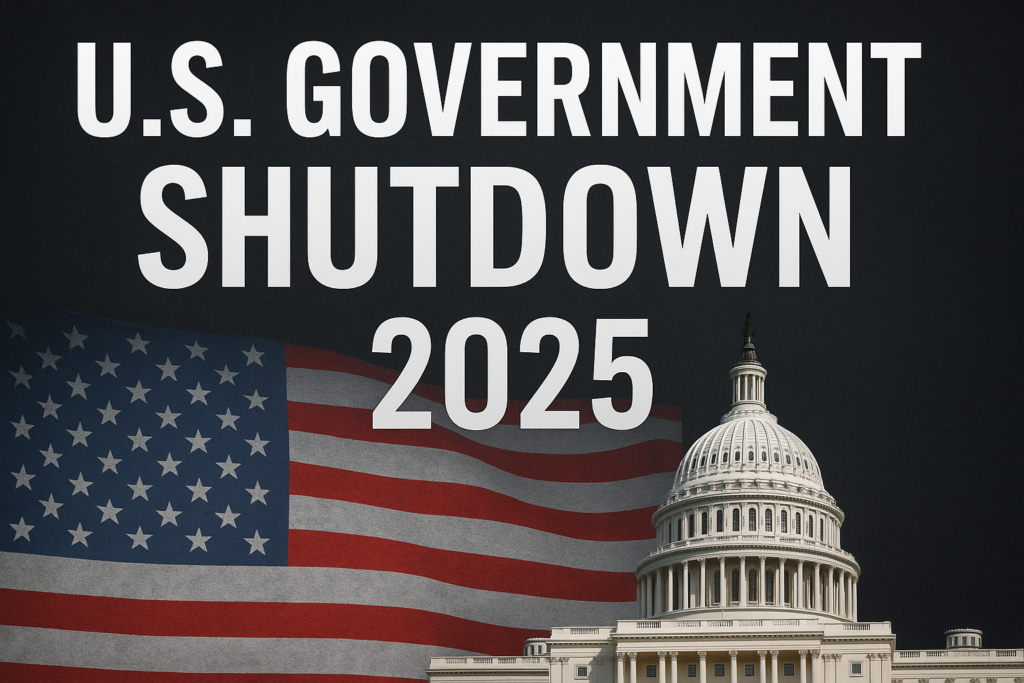
The United States officially entered a federal government shutdown on October 1, 2025, after Congress failed to pass the necessary funding bills for the new fiscal year. This marks the first major shutdown since the record-breaking 2018–2019 lapse in funding, once again throwing federal operations, employees, and the wider U.S. economy into uncertainty
Why Did the Shutdown Happen?
Every year, Congress must pass appropriations bills or a continuing resolution (CR) to fund government operations. This year, negotiations collapsed due to sharp disagreements over:
- Healthcare spending – particularly subsidies under the Affordable Care Act and Medicaid funding
- Foreign aid – proposed cuts and rescissions were fiercely contested
- Budget levels – disputes over defense vs. domestic program funding created deep divides.

Who is Affected?
Shutdowns do not impact all government functions equally. Agencies must separate essential” services from “non-essential” ones
Essential services (continue operating, often without pay):
- Military and national security
- Air traffic control & TSA
- Border security & law enforcement
- Critical health and safety services
Non-essential services (furloughed or suspended):
- National parks and museums
- Federal research programs (NIH, CDC, NASA projects)
- Regulatory and permit processing
- Many administrative offices
According to estimates, around 900,000 federal employees are furloughed, while another 700,000 are working without immediate pay. Though back pay is guaranteed by law after the shutdown ends, the financial strain on workers is significant
Key Areas Hit Hard
Health Sector:
- Nearly 41% of the Department of Health and Human Services staff are furloughed
- Public health surveillance, outreach, and research projects face major slowdowns
Travel & Transport:
- The FAA is furloughing 11,000 employees, raising concerns about delays and disruptions.
- Passport and visa processing may face extended delays.
Economy:
- Shutdowns cost the economy billions each week
- Federal contracts, grants, and small business loans face delays
- Consumer confidence often dips during shutdowns, hurting markets and spending.
DIGI MERCH STORE PRINT ON DEMAND

Political Fallout
Shutdowns are not only economic events but also political battles. The current deadlock has fueled:
- Partisan blame games between lawmakers over responsibility
- Public frustration, with citizens facing service disruptions
- Increased pressure on both parties to reach a compromise quickly
What Happens Next?
Short-term funding bill (Continuing Resolution): Lawmakers agree to a temporary measure to reopen government while negotiations continue
Full-year appropriations: A comprehensive budget deal resolves disputes
Prolonged stalemate: The shutdown drags on, worsening economic and political damage.
USshutdownlatestnews. dailyprompt-211
USgovernmentshutdown. dailyprompt
USeconomyshutdowneffect. Twitterposts
governmentshutdownnews. OutdoorGear
federalgovernmentshutdown. Websitebanner
Comment
















**mind vault**
mind vault is a premium cognitive support formula created for adults 45+. It’s thoughtfully designed to help maintain clear thinking
**mindvault**
mindvault is a premium cognitive support formula created for adults 45+. It’s thoughtfully designed to help maintain clear thinking